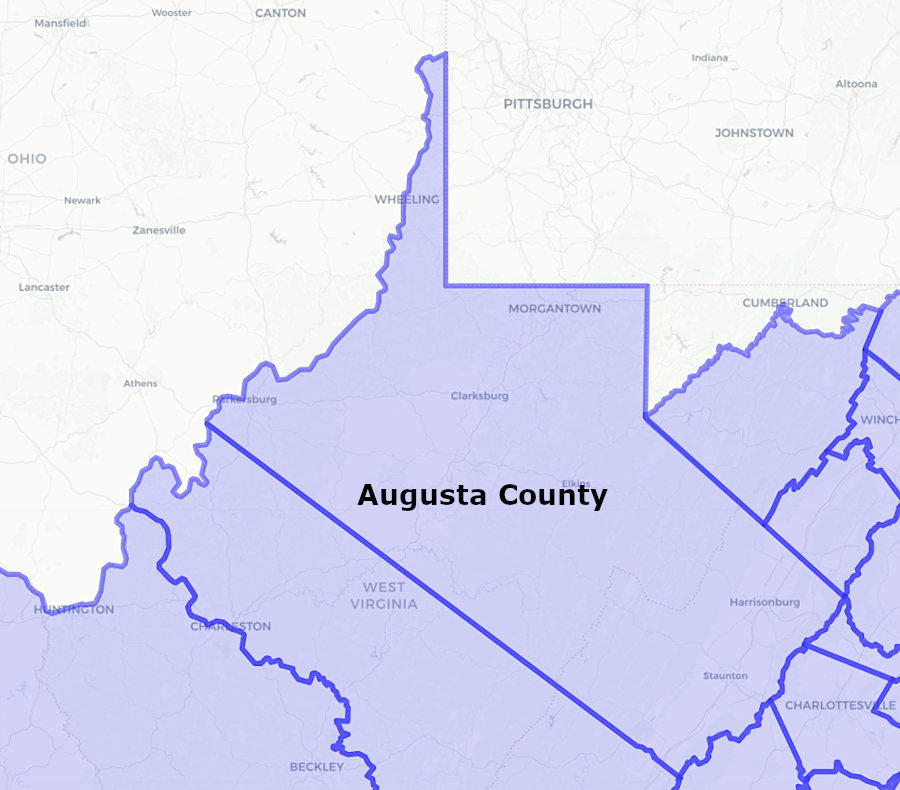
Augusta County before October 10, 1773
Source: Newberry Library, Atlas of Historical County Boundaries

Augusta County before October 10, 1773
Source: Newberry Library, Atlas of Historical County Boundaries
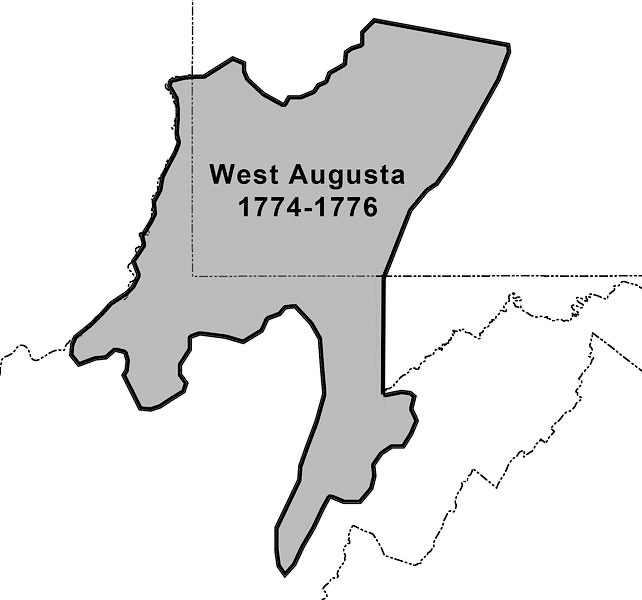
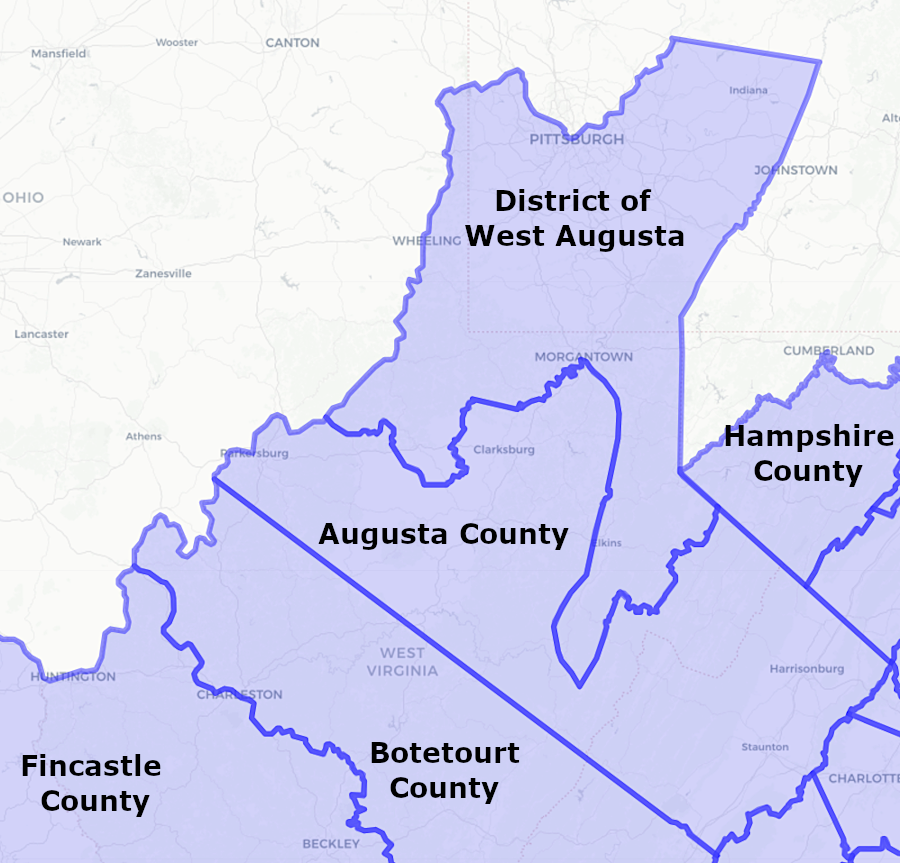
the District of West Augusta encroached into territory claimed by the colony of Pennsylvania
Source: e-WV: The West Virginia Encyclopedia Online, West Augusta; Newberry Library, Atlas of Historical County Boundaries
Virginia and Pennsylvania disputed the rights to the Forks of the Ohio, where the French built Fort Duquesne in 1753. The Virginia response, an expedition to expel the French led by a 23-year old George Washington, triggered the French and Indian War. By 1763 the French had ceded their claims to Canada and the lands west to the Mississippi River, and the English had replaced Fort Duquesne with Fort Pitt.
Shareholders in the Ohio Company, who anticipated gaining wealth by selling tracts of western land, were frustrated by the issuance of the Proclamation of 1763. It banned settlement west of the Eastern Continental Divide. Officials in London sought to limit colonial expansion in order to minimize conflict with the Native Americans and thus minimize the costs of providing military forces in the colonies.
Colonial officials supported western expansion, despite imperial policy set in London. They managed to negotiate cessions by Native American tribes of land claims west of the Allegheny Mountains in various treaties, including the 1768 Treaty of Fort Stanwix.
As relations with British officials frayed, Pennsylvania asserted its claim to the site of Fort Pitt and other land on the western edge of that colony by establishing Westmoreland County on February 26, 1773. The county court was located at Hanna's Town, which is near modern-day Greensburg and just east of Pittsburgh.1
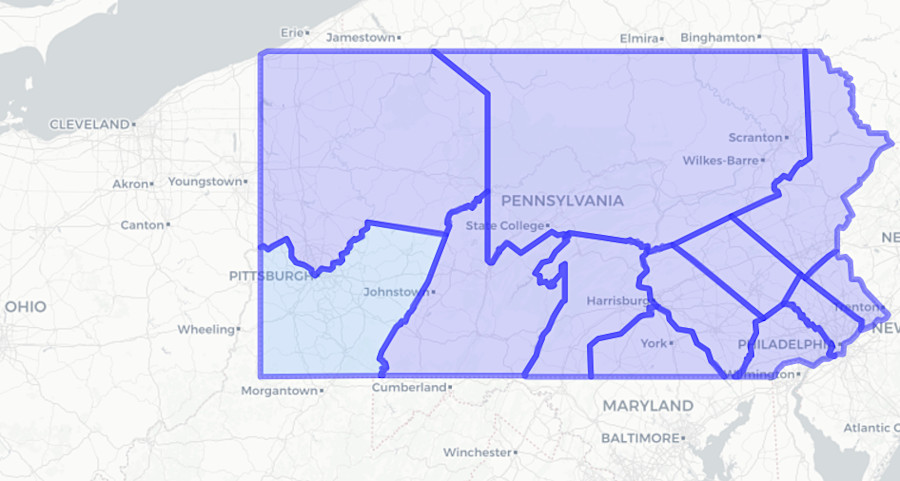
Pennsylvania established Westmoreland County in April, 1773, asserting its claim to the Forks of the Ohio
Source: Newberry Library, Atlas of Historical County Boundaries
The Virginia General Assembly responded by establishing the District of West Augusta on October 10, 1774. It was called a "district" rather than a "county" to minimize conflict with British officials.
The Third Virginia Convention in July, 1775, created a Committee of Safety and organized 16 military districts. The convention received a "letter from the committee on the Western Waters of Augusta, enclosing several papers on the subject of Indian affairs." Treaty negotiations with the Shawnee were still underway, after the Virginia colonists had won Dunmore's War in 1774, and the security of the western frontier was as tenuous as the security of Tidewater.
The convention tasked the District of West Augusta to raise three companies of riflemen for the colony's new army. Virginia could no longer rely upon the British Army to provide support if the Shawnee renewed attacks. One company was assigned to the First Virginia Regiment in Tidewater, led by then-Colonel Patrick Henry. Two companies were assigned for western frontier defense:2
The Fifth Virginia Convention declared independence in May, 1776, and there was no longer any reason to be concerned about a violation of the Proclamation of 1763. On October 7, 1776, the new General Assembly dissolved the District of West Augusta and replaced it with three official counties - Monongalia, Ohio and Yohogania.3
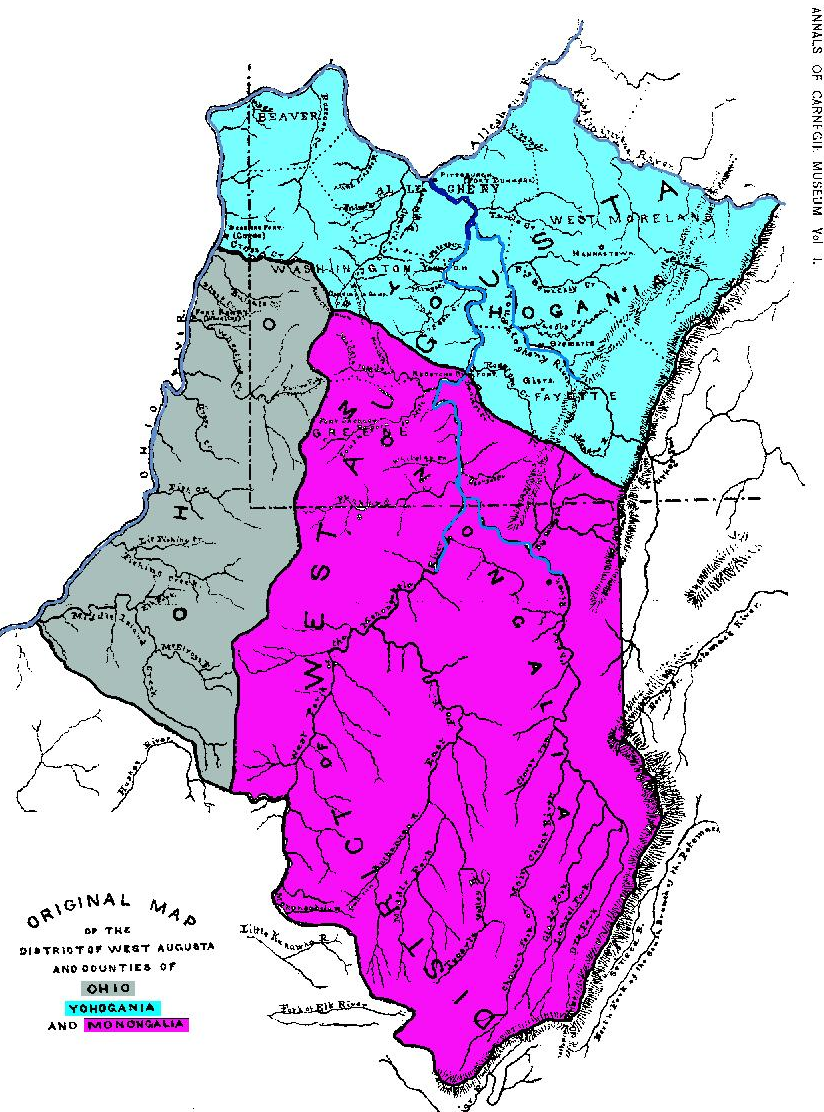
the District of West Augusta was replaced by Ohio and Monongalia counties (now part of West Virginia) and Yohogania County (extinct)
Source: Wikipedia, Yohogania County, Virginia